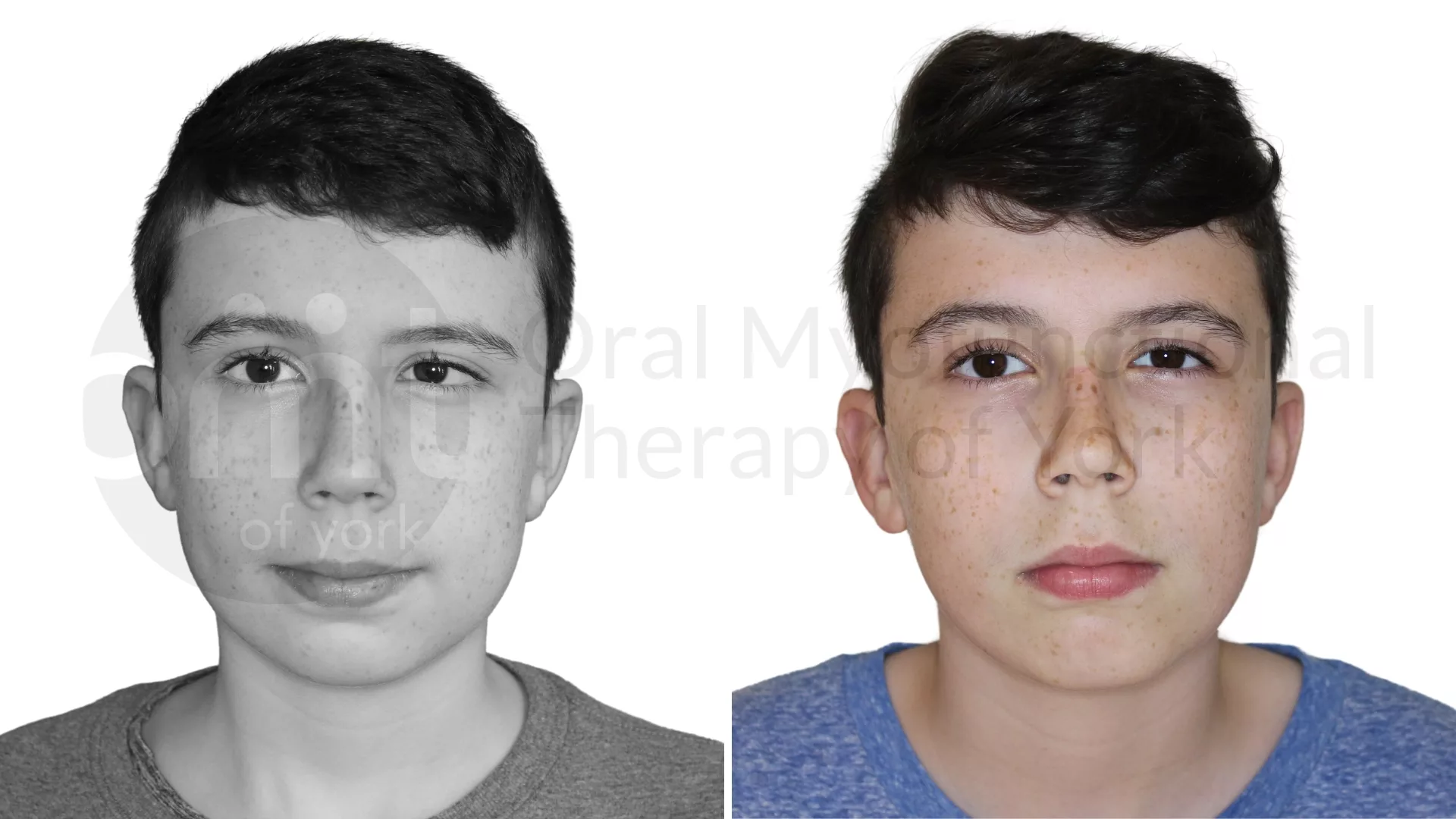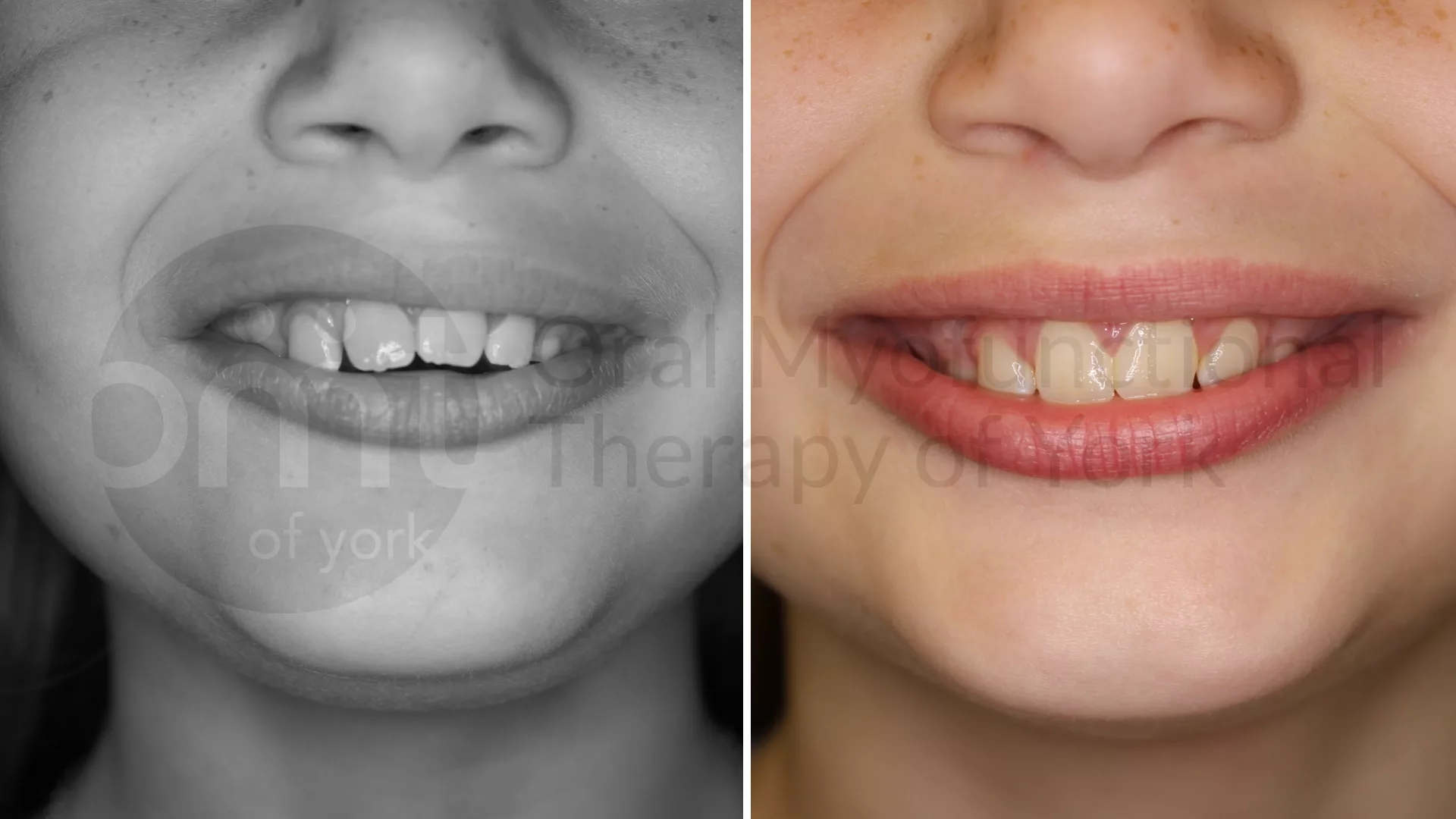OMT of York
Results

Improved oral rest posture and reduction of migraines after a tongue tie release and 4 months of OMT.

Improved oral rest posture and reduction of migraines after a tongue tie release and 4 months of OMT

Teaching the tongue to rest again the hard palate leads to better alignment of the front teeth and allows the open bite to close.

Thumb sucking elimination, therapy and a frenectomy leading to improved growth patterns

Improvement in the rest posture of the tongue and lips from OMT.

Better range of motion of the tongue from a frenectomy and therapy can lead to better growth patterns, better chewing/swallowing patterns and better overall health

This patient (a Speech and Language Pathologist) was incredibly fatigued after therapy with her own patients. Addressing her own tongue tie and oral rest posture made a significant impact in her ability to help others.

This severe tongue tie was contributing to poor oral rest posture, forward head posture and poor chewing/swallowing patterns. The patient had dramatic improvements after therapy and a frenectomy.

OMT when combined with good nasal hygiene can drastically improve breathing patterns, craniofacial growth and overall health.

OMT and a frenectomy combined with a growth guidance appliance led to amazing changes for this patient

Jaw position and jaw growth rely on good oral rest posture and good range of motion of the tongue.

Tongue restrictions that are often deemed “normal” by multiple medical practitioners can have a significant impact on growth and overall health. A full functional assessment is the correct way to determine if a tongue tie is present.

When the tongue rests low in the mouth, the facial muscles must compensate. This patient had improvements in facial muscle function and improved jaw growth after 6 months of OMT

Tongue tie release and 3 months of OMT

This patient had an upper lip tie released PRIOR to seeing us for therapy. Changes shown here are due to OMT to help rehabilitate the oral rest posture and help improve the short upper lip.

Nine months of OMT and a tongue tie release led to improved positioning of the lower jaw.

Severe tongue ties are often linked to fascial strain in other areas of the body. The decrease in fascial strain in the eye was a happy surprise after therapy and a frenectomy

Facial appearance can improve when addressing poor lip seal

Improvements in tongue posture, facial muscle function and jaw position at rest led to fantastic changes in appearance and function for this patient.

Improvements in tongue posture, facial muscle function and jaw position at rest led to fantastic changes in appearance and function for this patient.

Improvements in tongue posture, facial muscle function and jaw position at rest led to fantastic changes in appearance and function for this patient.

Eliminating oral habits such as thumb sucking can lead to better alignment of the teeth and jaws.

Eliminating oral habits such as thumb sucking can lead to better alignment of the teeth and jaws.

Chronic airway issues such as allergies are the most common cause of Orofacial Myofunctional Disorders. Combining OMT with treatment from the Allergist is essential in many cases.

Better tongue posture leads to better head posture and better breathing patterns.

Four months of therapy followed by Phase 1 orthodontic expansion led to phenomenal changes in less than a year for this patient.

Improving oral rest posture and establishing better nasal breathing prior to orthodontic treatment can lead to better orthodontic retention.

Just a few sessions (our mini myo program) and a frenectomy was all it took for this patient to have less jaw pain and less clenching.

Just a few sessions (our mini myo program) and a frenectomy was all it took for this patient to have less jaw pain and less clenching.

Improving lip seal and tongue posture can lead to better alignment of the teeth as well as better health of the gum tissue.

We can improve the range of motion and function of the tongue WITHOUT a frenectomy (tongue tie release) in many of the cases that we see. Proper diagnosis is essential prior to any procedure.